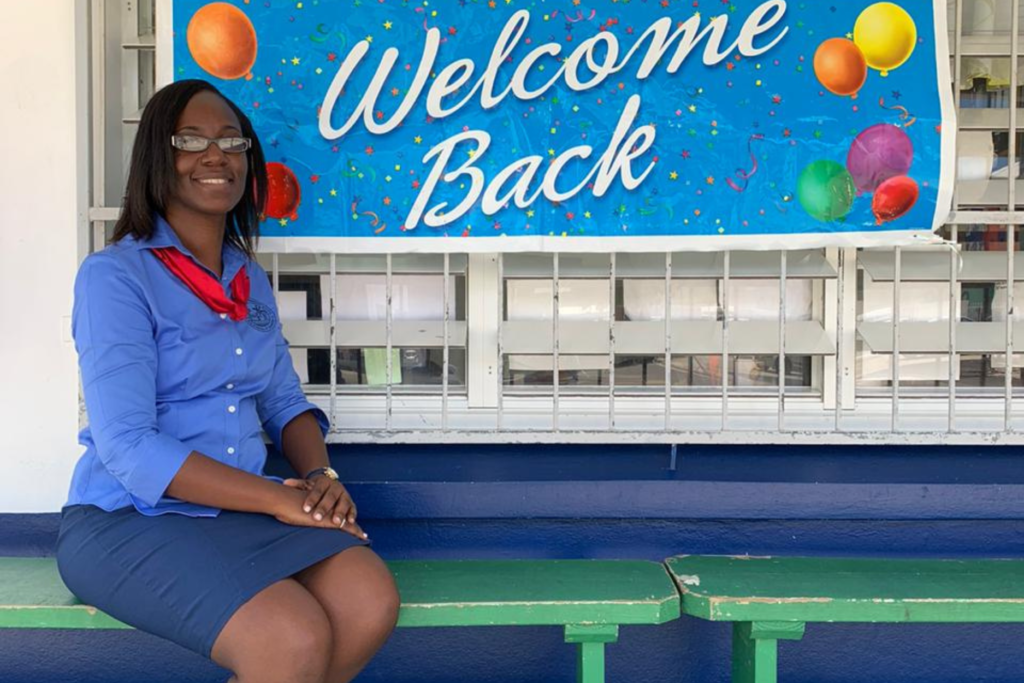The School Safety and Emergency Teams (SET) within Primary and Secondary Schools in Sint Maarten, continue to play an essential role in creating safer and more disaster-resilient schools. They play a large part in achieving results as part of the Comprehensive School Safety Framework (CSSF).
“The CSSF takes an “all-hazards, all-risks” approach, including natural and climate-change-induced hazards, technological hazards, biological and health hazards, conflict and violence, and everyday dangers and threats,” explains Olga Mussington Service, Head of Student Support Services Division (SSSD). SSSD spearheads many school safety activities and developments on Sint Maarten: School safety is not just about buildings, it is also about people, planning, drills, information sharing, resource mobilization, support, etc. The SET Teams have been instrumental in the successes achieved!”
Each school can appoint members and assign their roles within their SET. This can include teachers, the principal, the vice principal, student care coordinators, school counsellors, gym teachers, maintenance personnel, security guard, etc. The SET Members receive training on an array of school safety topics. They also assist in developing and updating their ‘School Safety and Emergency Plan’ – to ensure the school is prepared for any emergency or disaster that might come their way.
In short, SET help keep students safe! In this article, we spotlight two SET Members and learn more about their roles:

Sister Borgia Elementary School
What is your role as SET Member?
I am the school manager of Sr. Borgia Elementary School. My role as a SET Member is the Chairperson. I’m the person that all initial communication and planning goes through. I sit with the SET members, and we review and plan our school safety and emergency response together. In addition, we attend various trainings to keep up to date with school safety topics and developments.
Why is it essential for schools to have a functional SET?
A school should have a SET in place for quick reaction and smooth follow-up in case of an emergency. The roles are divided, and everyone knows immediately how to handle the situation once an emergency arises. The SET members create peace during an emergency and less panic.
What are some goals the SET at your school is working towards?
Our school’s SET is working towards having all stakeholders participate in drills. We continue to update our disaster plan and practice procedures.
How are your students better protected with a SET?
We have the disaster plan in place. It isn’t only a written document but a working document. Every few months, we review this document as SET Members to make continuous improvements and update the staff on any new procedures. During trainings, SET members learn certain practices and these practices we bring back to our entire school team to bring more awareness of how to handle emergencies. All of this is done to protect our students and staff better!
Do you have a few tips for families with children regarding emergency preparation?
Include the children in the planning and preparation in case of emergencies; have drills at home with your children; hold open discussions with children about how they feel. Being prepared is very important. Having more persons involved in preparing a plan and carrying out specific tasks is helpful. Evaluation after emergencies is also necessary to know how to improve the next time. In addition, we should also create space for students, staff, and our wider public to speak about how they feel. Sharing your experience, especially after a disaster or emergency is helpful to process your feelings. This is helpful for yourself and for others – you are not alone.

What is your role as SET Member?
I am the Department Head/Principal of the Sundial School. My role as SET Member is to be the first contact person to receive and share information with staff, the general office, and other SET Members in cases of emergencies.
Why is it essential for schools to have a functional SET?
In my opinion, it is crucial for schools to have a functional SET because we have to ensure the safety and well-being of students and staff as best as possible. The SET can proactively identify and mitigate any potential safety hazard and respond swiftly to the emergency, reducing the risks of death or physical harm to students and staff. SET contributes to creating a secure and favourable learning environment for everyone involved, and this is achieved when all stakeholders are informed and take ownership of safety collectively.
What are some goals the SET at your school is working towards?
The SET is working on conducting safety drills and training, including activities such as: Providing training and support for staff and students. Assessing and troubleshooting what is deemed as potential hazards or vulnerable areas at the school. Improving our communication systems among team members and external stakeholders. Review and update our emergency plans to reflect our ever so often changing circumstances.
How are your students better protected with a SET?
The presence of our SET ensures that everyone at school is better prepared and protected through their proactive measures, training, emotional support services, guidance, and planned swift responses towards an emergency. Students also learn the safety procedures so that they can react with more confidence in an emergency. I think this also helps students focus better on their education – knowing that their safety is seriously considered in our school.
Do you have a few tips for families with children regarding emergency preparation?
Families should create their family emergency plan that describes the evacuation routes and the meeting points, along with the critical contact information for all key family members (safe friends) and emergency services. Make it a fun day and do a practice drill to familiarise everyone with the procedures. Educating them on standard emergency procedures will help them to understand, stay calm, and remember what to do during an emergency. Make sure to have an up-to-date and well-stocked emergency kit. Do not forget favourite toys or items for your children – these can help to lessen anxiety levels during a disaster.
Remain informed and updated on the safety recommendations from our government’s SET and the government’s official information outlet (DCOMM). Always involve the children in emergency preparedness plans and activities. Children might see things from a child’s standpoint that you, the adult, might not even think about.







